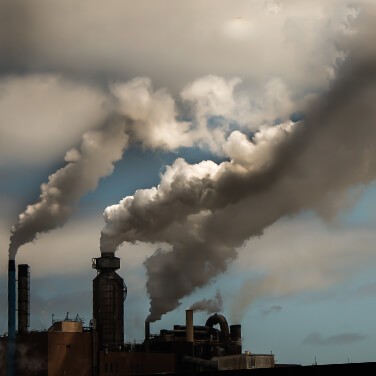Direct Air Capture: A Cheaper Way to Combat Climate Change
By Mae Pyer
A new approach to slowing climate change is offering promising results. Using a method to capture carbon dioxide (CO2) from the air, scientists now have the potential to recycle large quantities of this greenhouse gas to hopefully minimize the warming trend.
Damage Control
With CO2 levels, global temperatures, and ocean waters on the rise, scientists continue to warn about the implications of climate change for the future of our planet. To prevent an overall warming of 2°C, experts estimate that every country needs to have a near-zero carbon footprint by midcentury. In other words, they’ll need to remove roughly the same amount of carbon dioxide as they’re emitting. But even that won’t be enough: every country will need to remove from the atmosphere more of the gas than they produce in the years that follow.
To help reverse the harsh reality of climate change, Harvard University physicist and co-founder of Carbon Engineering David Keith has released his company’s findings about a method called Direct Air Capture (DAC). To begin the process, air is directed through large grids of fans to a solution containing a CO2 -capturing chemical. This chemical traps the CO2 so that it can be stored underground or used to make products and synthetic fuels.
The opportunity to recycle this gas actually sparked another project in which scientists determined that low-carbon fuels could be produced for roughly one dollar per liter. With sufficient demand, the market for DAC plants could increase, lowering the cost for both the plant and the fuel.
The Cost of Climate Change
In 2011, DAC appeared to be a desirable solution with an undesirable cost. Based on projections from the American Physical Society, it costs roughly 600 USD to capture one ton of CO2. To put that in perspective, in 2017 we produced 35.8 billion tons of CO2 globally.
More accurate cost figures for DAC became available with the opening of a pilot plant in 2015. Using three years of operational data, including information about plant efficiency and the cost of building a commercial size facility, Keith and his team reported that it’s possible to capture CO2 at a cost of 94 to 232 USD per ton.
While initial results are promising, scientists can’t predict how rapidly these plants could spread or if they’ll be able to unravel climate change trends quickly enough.
Facing Our Future
Carbon Engineering states that the process of DAC can be scaled up to ultimately trap one million tons of CO2 per commercial facility each year. While an expensive undertaking, scientists hope that using this technology to recycle such a key greenhouse gas will at least provide a viable answer to a daunting problem that is only growing more urgent.
